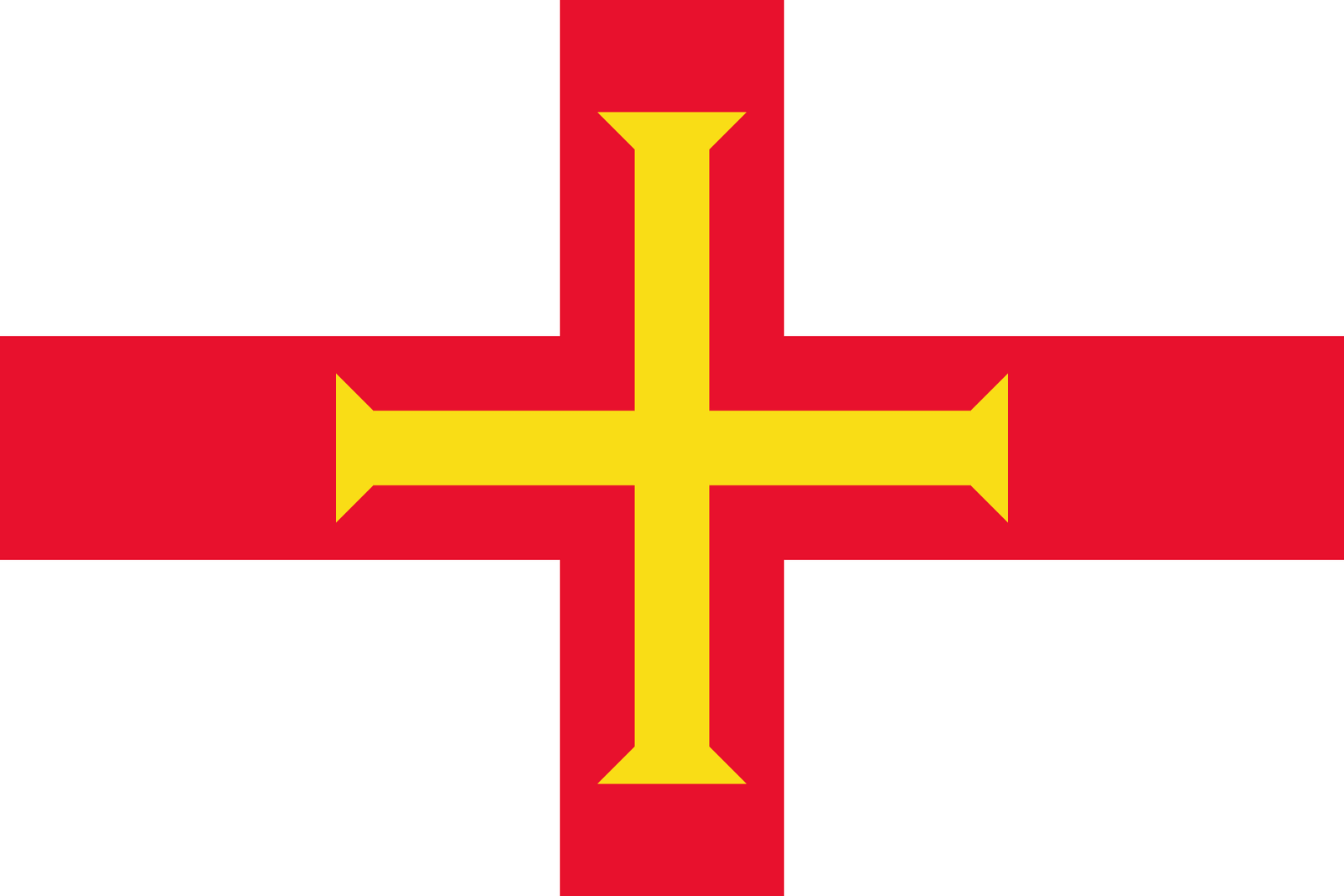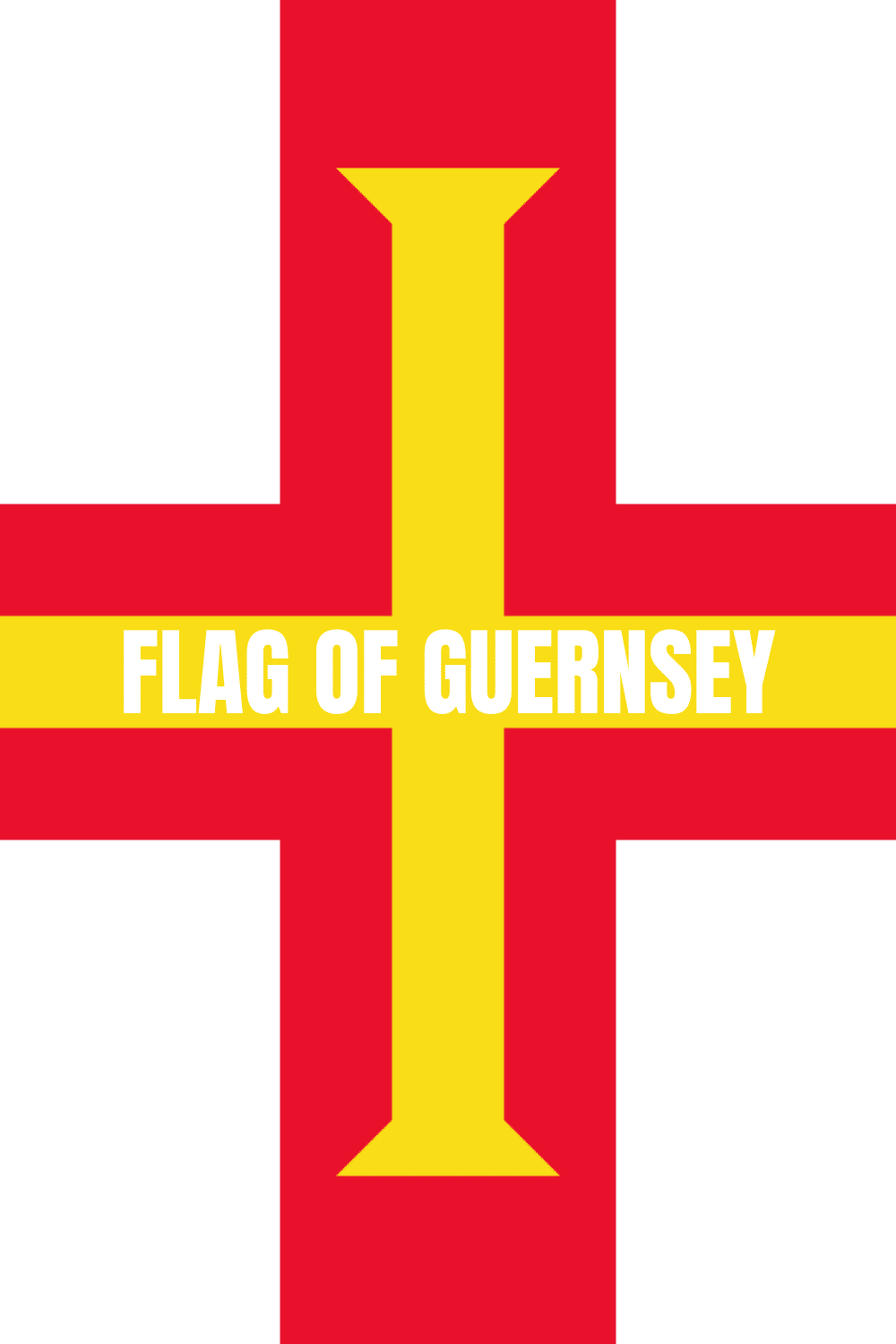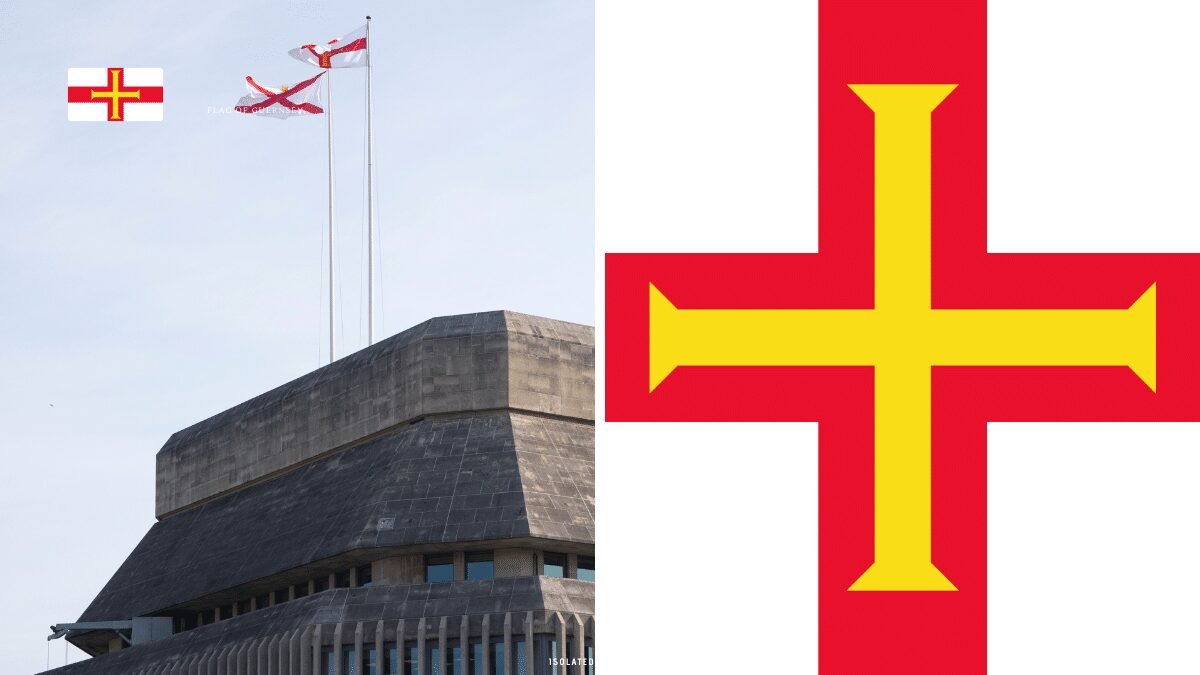Flag Of Guernsey
Guernsey’s flag was adopted in 1985 and consists of a red Saint George’s Cross with a gold Norman cross within it. Confusion at international sporting events caused by competitors from Guernsey and England flying the same flag prompted the creation. The Guernsey Flag Investigation Committee, led by Deputy Bailiff Sir Graham Dorey, created it. On February 15, 1985, the island’s flag was unveiled for the first time. The gold cross represents William the Bastard, Duke of Normandy, who became William I of England after the conquest.
Pope Alexander II allegedly gave William such a cross, which he flew on his standard during the Battle of Hastings. Since 2000, the government’s civil ensign has been a red ensign with a cross in the fly, as well as a blue ensign.
Guernsey went without an official flag for a while, but there is evidence of an earlier, 19th-century design being used. The St George’s Cross was depicted on a striped background, with the Union Flag in the upper left quarter. The question of whether the chequered field should be blue and white or black and white has sparked some debate.

History of the Flag of Guernsey
For centuries, the government of Guernsey flew the English flag. A St. George’s Cross was displayed on a background of blue and white squares with the Union Jack in the canton in the mid-nineteenth century. Several unofficial flags for Guernsey were adopted in the twentieth century for use in sporting events and other activities, and King Edward VIII granted formal approval for the use of the Cross of St. George flag in 1936. Despite the fact that the island’s German occupiers prohibited the display of official British symbols on Guernsey during WWII, local vessels continued to fly the Cross of St. George flag.
In the 1980s, a committee designed the first official Guernsey flag. Commander Bruce Nicolls, a retired Royal Navy officer and committee member, proposed using symbolism from the famous Bayeux Tapestry, which depicts the Norman Conquest of England in 1066. The tapestry depicts the pope’s gift of a flag with a yellow cross to William I the Conqueror. The “Guernsey cross” was depicted in the centre of the Red Cross of St. George to show that the islands were originally part of the duchy of Normandy before becoming an English crown dependency.
The flag was made official on May 9, 1985, to commemorate the 40th anniversary of Guernsey’s liberation from German occupation. By incorporating the Bayeux Tapestry cross, a distinct design for the Guernsey standard was created without infringing on the English flag.
Guernsey ensign
The Guernsey ensign is a flag flown on boats and ships registered on the island of Guernsey. The design is based on the Guernsey flag, but with the addition of the British Blue Ensign in the upper left corner.
The British Blue Ensign is a blue flag with a badge or emblem in the centre and the Union Jack in the upper left corner. The badge on the Guernsey ensign is the same red shield with three golden lions passant guardant that appears on the Guernsey flag.
The use of the British Blue Ensign on the Guernsey ensign indicates that Guernsey is a Crown Dependency of the United Kingdom and that the boat or ship is registered in Guernsey. The Guernsey ensign is one of several British ensigns that are flown by boats and ships all over the world to indicate their registration and nationality.


